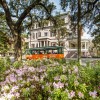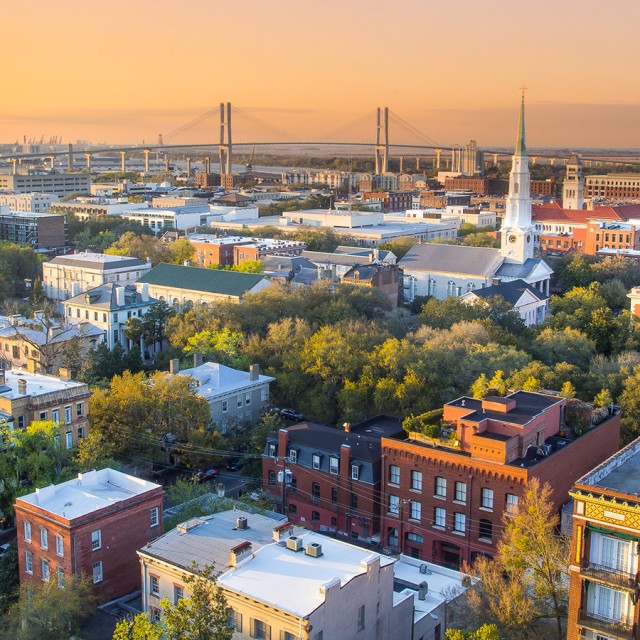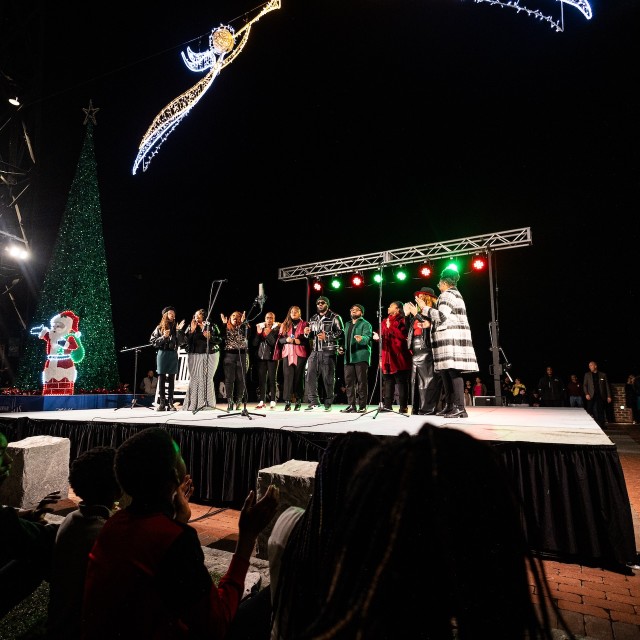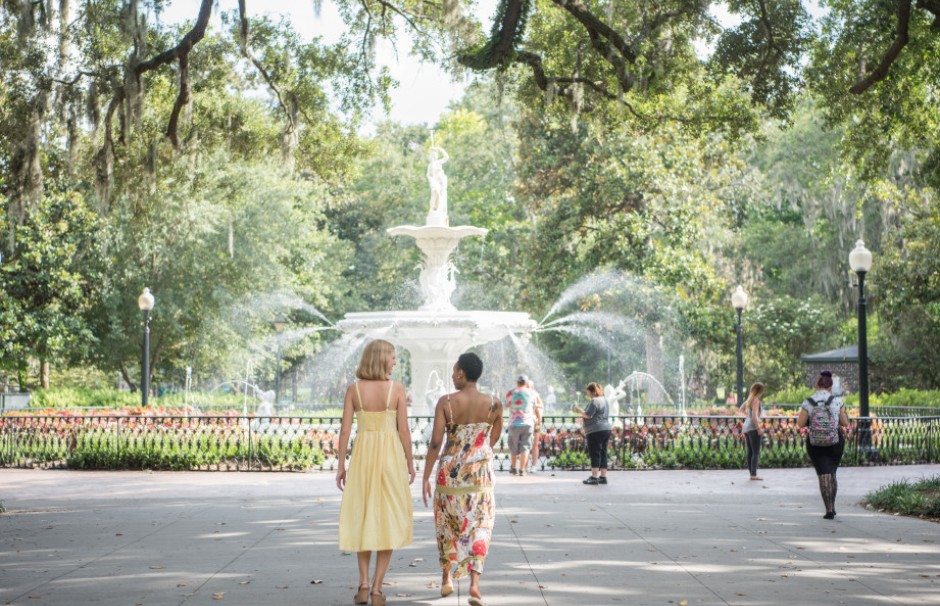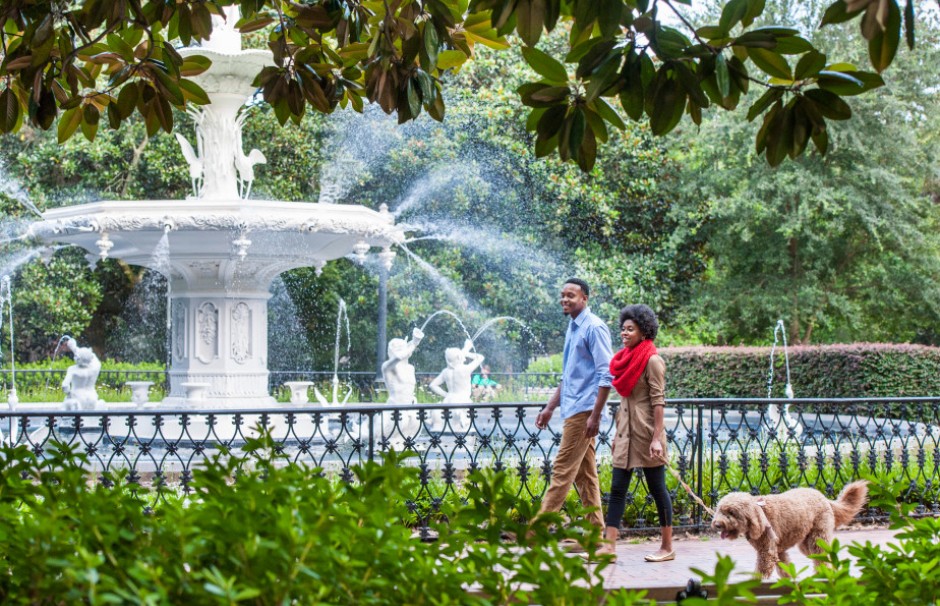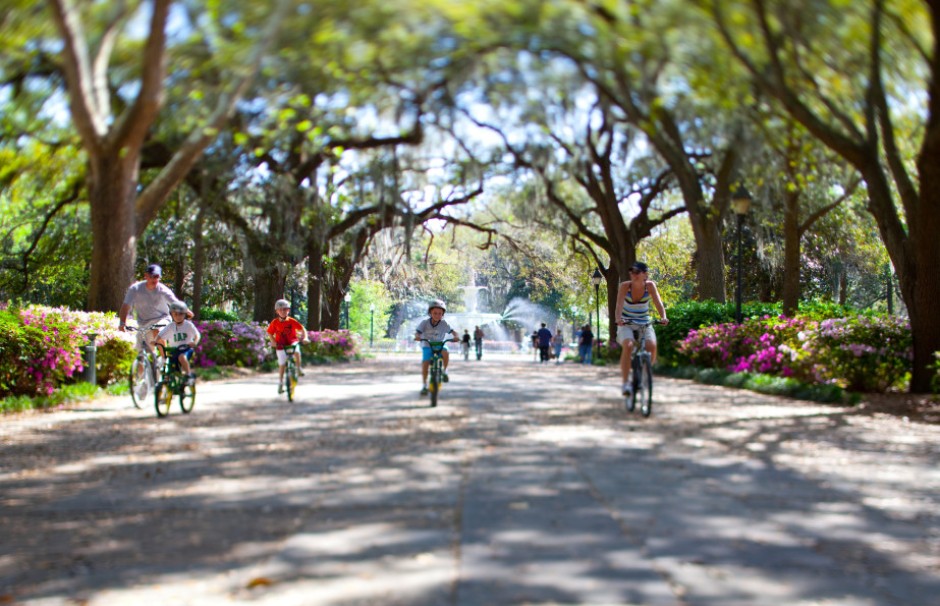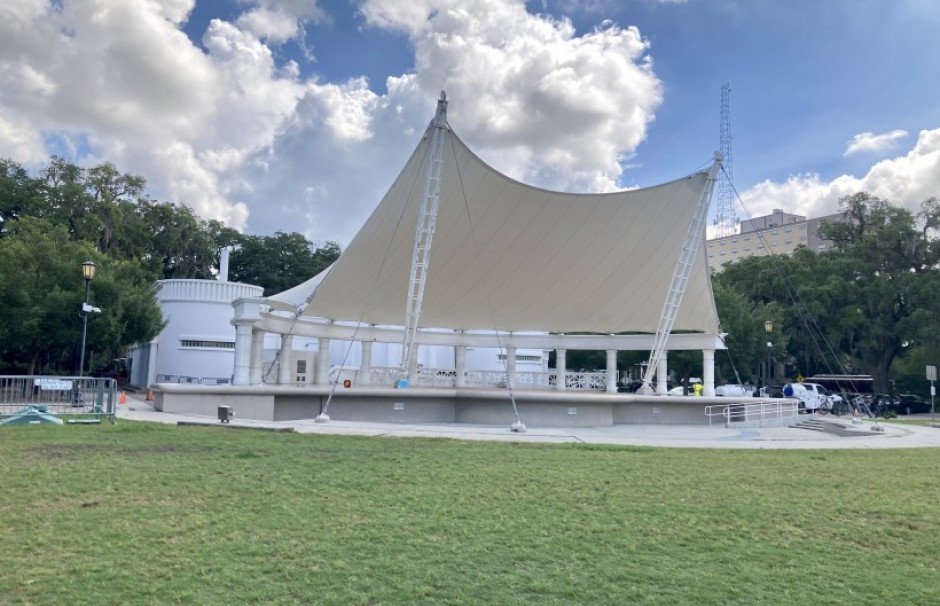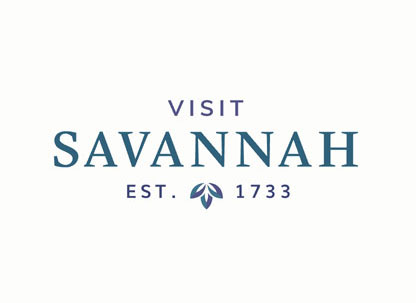Profile
Forsyth Park
Scroll to view more
of
Info & Amenities
Spanning more than 30 acres, Forsyth Park is Savannah’s largest and oldest public park. The land for the park was donated by William Brown Hodgson in the 1840s, and named for illustrious statesman and thirty-third Georgia governor John Forsyth, who also represented Georgia in both the House of Representatives and the Senate, as well as serving as Secretary of State under Presidents Andrew Jackson and Martin Van Buren. The park’s iconic fountain was installed in 1858 and is today one of the most-photographed places in Savannah. Although the fountain has become a symbol of Savannah, it isn’t unique: similar fountains can be found in Paris and Cusco, Pero (it was actually ordered from a catalog!).
One of the park’s first uses was serving as a parade ground for Confederate troops drilling before mustering out to battle, which is why this spot was selected for Savannah’s memorial to Confederate soldiers. Other monuments in the park include the Georgia Volunteer for the Spanish American War, installed in 1931, busts of local generals Francis S. Bartow and Lafayette McLaws, and a monument to 24 Chatham County marines who lost their lives in World War II.
Forsyth Park is also home to a fragrant garden for the blind, repurposed from a mock fort constructed for training purposes before World War I. Visitors and locals love to take advantage of the park’s expansive green, where festivals, concerts and the weekly Forsyth Park Farmers’ Market are held. There is abundant shade and space for sitting to take in the towering live oaks and pink- and white-dotted azalea bushes, and people can always be find walking, jogging and leading dogs on the park’s paths.
When you visit Forsyth Park, you may want to stop at The Sentient Bean for a cup of coffee, Brighter Day Natural Foods for a fresh, organic lunch, the research library at the Georgia Historical Society, or Local 11ten for dinner in the vault of a former bank and a unique rooftop bar among the trees.
One of the park’s first uses was serving as a parade ground for Confederate troops drilling before mustering out to battle, which is why this spot was selected for Savannah’s memorial to Confederate soldiers. Other monuments in the park include the Georgia Volunteer for the Spanish American War, installed in 1931, busts of local generals Francis S. Bartow and Lafayette McLaws, and a monument to 24 Chatham County marines who lost their lives in World War II.
Forsyth Park is also home to a fragrant garden for the blind, repurposed from a mock fort constructed for training purposes before World War I. Visitors and locals love to take advantage of the park’s expansive green, where festivals, concerts and the weekly Forsyth Park Farmers’ Market are held. There is abundant shade and space for sitting to take in the towering live oaks and pink- and white-dotted azalea bushes, and people can always be find walking, jogging and leading dogs on the park’s paths.
When you visit Forsyth Park, you may want to stop at The Sentient Bean for a cup of coffee, Brighter Day Natural Foods for a fresh, organic lunch, the research library at the Georgia Historical Society, or Local 11ten for dinner in the vault of a former bank and a unique rooftop bar among the trees.
Facilities - Used For
- Multiuse
Wheel the World
- Wheel the World Description The property excels in accessibility with designated accessible parking spaces located near the entrance, providing convenience for guests with disabilities. The entrance features a step-free pathway, ensuring easy access for wheelchair users. Additionally, the site includes accessible paths and trails, promoting outdoor exploration for all visitors.
- Wheel the World URL https://wheeltheworld.com/places-to-go/united-states/savannah/forsyth-park
As Mentioned In
Located along the Whitaker Street side of Forsyth Park, the Victorian District encompasses 50…
If you’re searching for scenery as unique as your love, let Savannah mark the start of your happily…
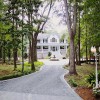
Forsyth Park is the ultimate gathering spot for Savannah‘s locals and visitors alike. At the park…

In Savannah, sunny weather provides the perfect opportunity to gather your friends and have a…

To cover the most ground while exploring Savannah and Tybee Island, try running! Runners can make…

Between milestone birthdays, bachelorette parties, sisterhood reunions and much needed vacations,…
Wonderful weather and fun-filled events make spring an exciting season to be in Savannah! Whether…
